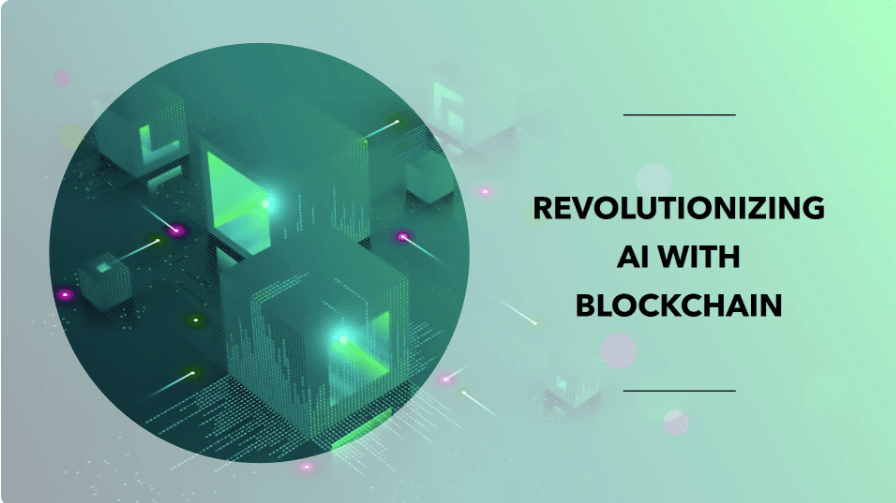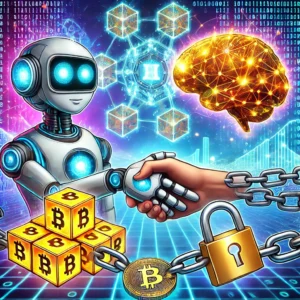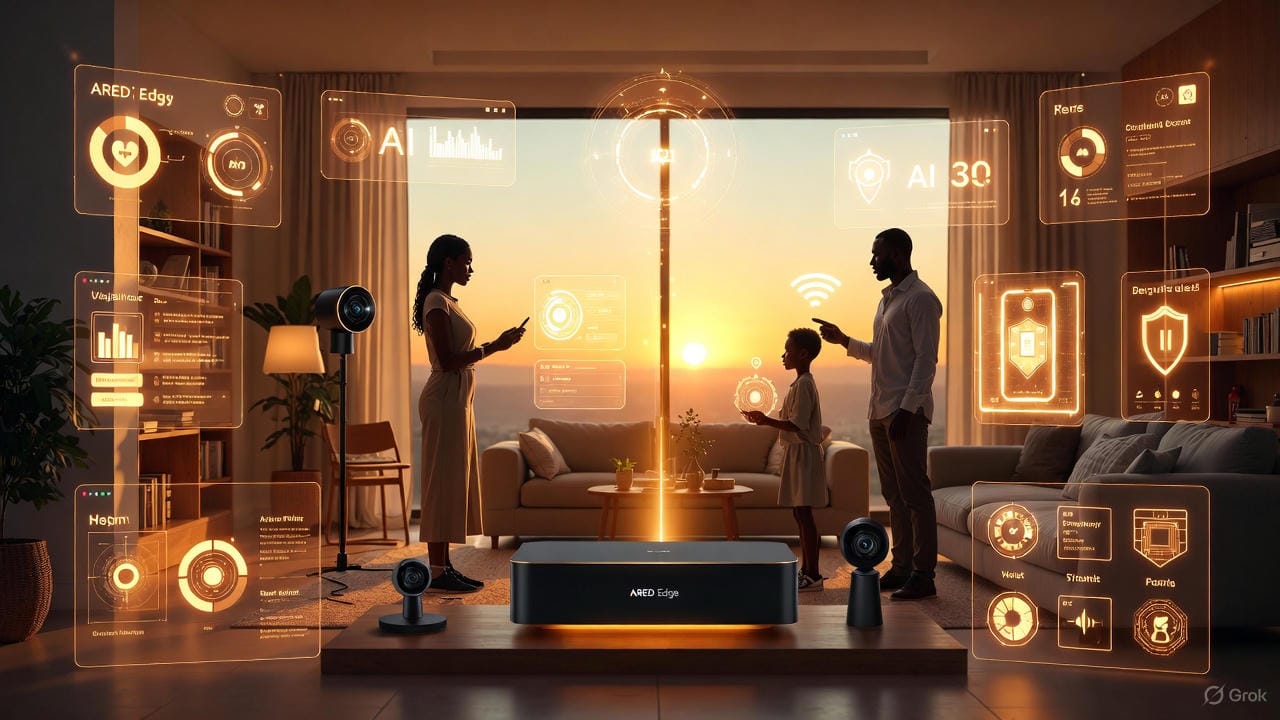
AI on the Blockchain: Revolutionizing or Exploiting Decentralization?
The integration of Artificial Intelligence (AI) with blockchain technology is one of the most exciting developments in tech today. AI, with its ability to analyze data and make intelligent decisions, and blockchain, with its promise of transparency and decentralization, seem like a match made in heaven. But does this fusion empower the vision of decentralization, or does it quietly undermine it?
In this blog, we’ll dive into how AI and blockchain intersect, explore the opportunities and challenges of this powerful partnership, and ask the critical question: Is AI revolutionizing or exploiting blockchain’s decentralized nature?
What Is Blockchain? A Quick Recap
At its core, blockchain is a distributed ledger technology that allows data to be stored securely across a network of computers. Unlike centralized databases, blockchain operates without a central authority, making it transparent, immutable, and resilient. Popularized by cryptocurrencies like Bitcoin, blockchain has since expanded into industries like supply chain, healthcare, and now, AI.
What Is AI’s Role in Blockchain?
AI brings intelligence to blockchain, enabling:
- Data Analysis: AI can analyze blockchain data to detect patterns and predict trends.
- Automation: Smart contracts powered by AI can adapt to real-world conditions.
- Optimization: AI can optimize blockchain performance by managing resource allocation.
But these benefits come with questions. Is AI helping blockchain fulfill its decentralized promise, or is it creating new centralization risks?

How AI Is Revolutionizing Blockchain
1. Enhanced Efficiency and Scalability
One of blockchain’s biggest challenges is scalability. Networks like Ethereum struggle with transaction speeds and high energy consumption. AI addresses this by:
- Predicting network congestion and rerouting transactions.
- Optimizing energy use in Proof-of-Work (PoW) systems.
- Introducing smarter consensus mechanisms like Proof-of-Intelligence (PoI).
Example: AI-powered tools like Fetch.ai are enabling decentralized marketplaces by using machine learning to optimize blockchain resources.
2. Smarter Smart Contracts
Traditional smart contracts execute predefined actions when conditions are met. AI enhances this by:
- Learning from past transactions to improve contract terms.
- Making dynamic decisions based on external data (e.g., weather for crop insurance).
Example: Ocean Protocol integrates AI and blockchain to enable data-driven smart contracts, revolutionizing industries like finance and insurance.
3. Fraud Detection and Security
AI improves blockchain security by:
- Detecting suspicious activity in real-time.
- Identifying vulnerabilities in smart contracts.
- Enhancing authentication processes.
Example: Projects like DeepBrain Chain use AI to monitor blockchain activity and secure networks from threats.
Is AI Exploiting Blockchain’s Decentralization?
While the benefits are clear, AI’s integration into blockchain raises concerns about centralization and control.
1. Data Aggregation
AI requires large datasets to train models, often centralized in a few locations. This creates a conflict with blockchain’s decentralized ethos.
The Risk: Centralized data hubs controlled by a few entities could undermine the transparency and trust blockchain promises.
2. Algorithmic Bias
AI systems are only as good as the data they’re trained on. Biased data can lead to biased outcomes, which may disproportionately affect certain blockchain users.
The Risk: A decentralized system may still produce unfair results if AI models introduce biases.
3. Control Over AI Models
AI models are often proprietary, owned by corporations or developers. In a decentralized blockchain, this could give certain parties outsized influence.
The Risk: The concentration of power in AI development could create a “centralized” layer on top of the decentralized blockchain.
Opportunities for AI and Blockchain Collaboration
Despite the risks, the collaboration between AI and blockchain presents exciting opportunities:
1. Decentralized AI Marketplaces
Blockchain can democratize AI by creating marketplaces where developers and users interact directly. Platforms like SingularityNET allow developers to share AI services on a decentralized network, reducing reliance on tech giants.
2. Federated Learning
Federated learning enables AI models to be trained across multiple devices without aggregating data. Combined with blockchain, this ensures privacy while maintaining decentralization.
Example: Projects like Fetch.ai use federated learning to train AI models across decentralized nodes.
3. Transparent AI Audits
Blockchain’s immutability can be used to record AI decision-making processes, making it easier to audit and ensure ethical behavior.
Example: IBM is exploring blockchain-based AI auditing to build trust in autonomous systems.
Real-World Applications of AI on Blockchain
1. Healthcare
AI analyzes medical data stored on blockchain to improve diagnostics and personalize treatments. Patients retain control of their data, aligning with blockchain’s ethos.
2. Supply Chain
Blockchain ensures transparency in supply chains, while AI predicts delays and optimizes logistics.
Example: VeChain integrates AI and blockchain to track products and improve efficiency.
3. Finance
AI analyzes blockchain transaction data to detect fraud and predict market trends.
Example: AI-driven trading bots are increasingly using blockchain for transparent operations.
Challenges to Address
To maximize the benefits of AI and blockchain while preserving decentralization, we must address the following challenges:
1. Privacy
Blockchain is transparent, but AI’s data requirements may compromise user privacy. Solutions like zero-knowledge proofs can help.
2. Cost
Training AI models on blockchain can be expensive. Scalability solutions like Layer 2 networks are essential.
3. Regulation
Both AI and blockchain face regulatory scrutiny. Clear frameworks are needed to ensure innovation without exploitation.
The Future: Striking a Balance
The future of AI and blockchain depends on striking the right balance between centralization and decentralization. Key steps include:
- Open-Source AI Models: Ensuring transparency and reducing monopolies.
- Decentralized AI Training: Using federated learning and blockchain to train models without centralization.
- Ethical Guidelines: Establishing rules for responsible AI and blockchain use.
Conclusion: Revolution or Exploitation?
AI on blockchain is both a revolution and a potential risk. It can solve blockchain’s biggest challenges, but only if implemented thoughtfully. By embracing transparency, decentralization, and collaboration, we can ensure that AI and blockchain work together to create a future that’s both innovative and ethical.
So, what do you think?
Is AI revolutionizing blockchain or exploiting it? Let’s discuss in the comments below!
FAQs
1. Can blockchain and AI work together without compromising decentralization?
Yes, through solutions like federated learning, open-source AI, and decentralized marketplaces.
2. What industries benefit the most from AI and blockchain integration?
Healthcare, finance, and supply chain management are leading examples.
3. What are the risks of combining AI and blockchain?
Centralization, algorithmic bias, and privacy concerns are the main challenges.
Link Suggestions:


